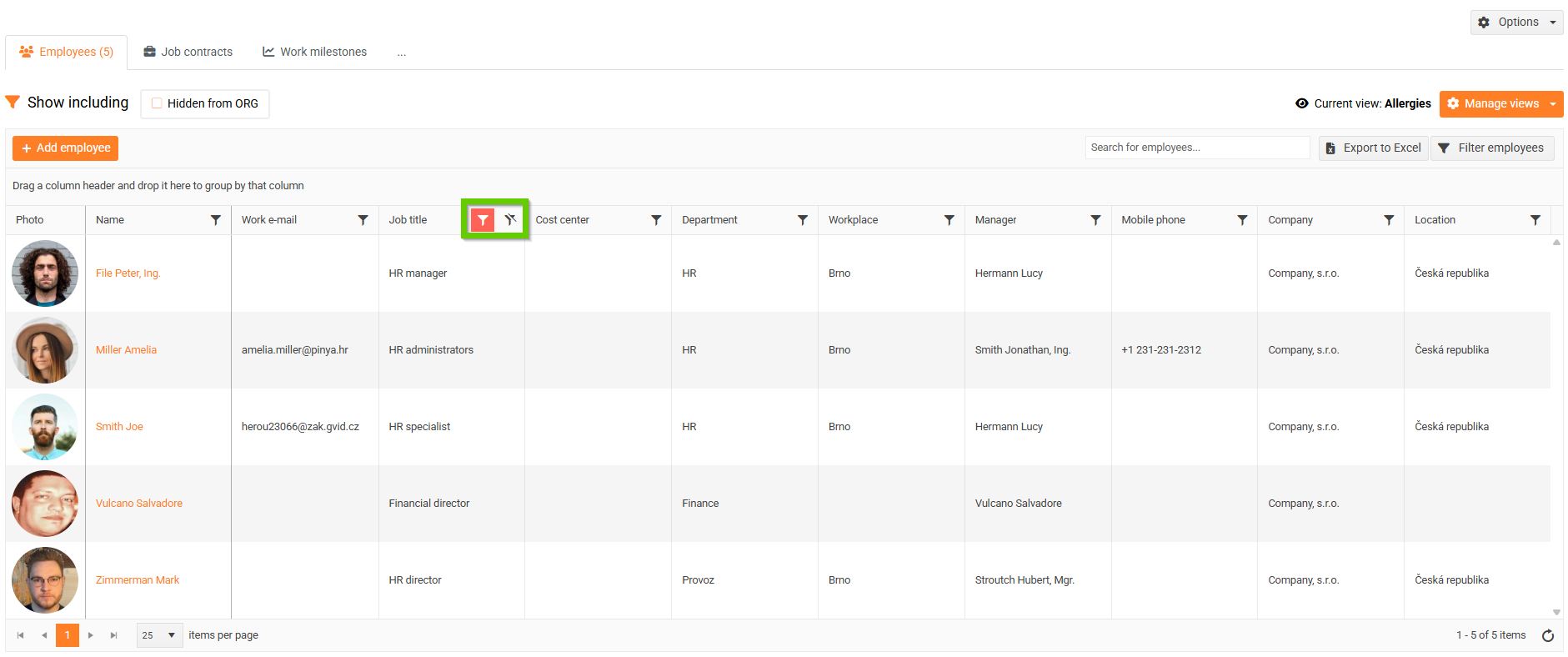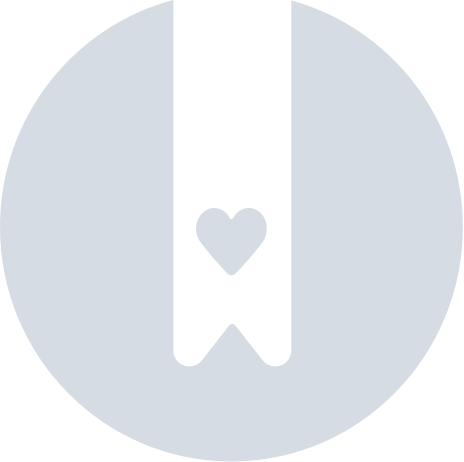Filters in column headers
For each column in the employee list, you will find a small filter (funnel icon),
which allows you to quickly search and limit the displayed records according to the values in that column.
Thanks to them, you can, for example, display employees only from a specific department, by job position or other criteria,
without having to set up a more complex overall filter.
Filters make it easier to navigate larger lists and speed up the search for necessary information.
There are 6 filter variants :
1. Filter above the Name column
This column is specific - if there are more columns in the grid than can fit on the page, a horizontal scroll bar will be displayed.
You will always see the Name column because it is anchored , meaning it remains visible even when you scroll the list sideways.
This column also has its own filter, which is used to quickly search for specific employees by name.
How is it used?
- Click the filter icon.
- Start typing the employee's name.
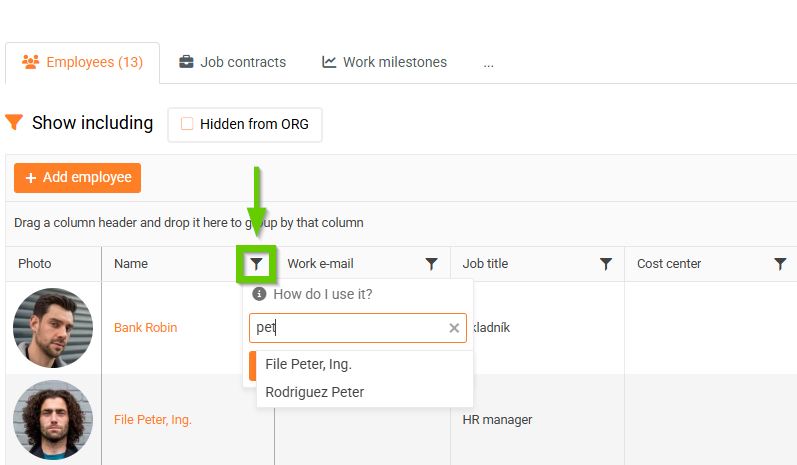
- To select all found, press Enter.
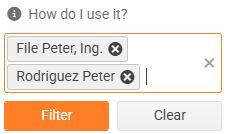
- To select one employee:
- point the mouse at the name and left-click, or
- use the arrows to navigate and press Enter
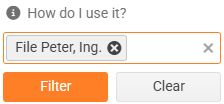
- Repeat this process for any number of employees.
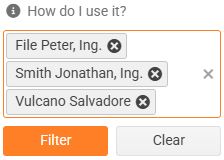
- Click the Filter button.
2. Filter above a column that is a number line
This filter is used on columns that are categorical (e.g. company, job title, department, country...) - i.e. where values in the column are repeated.
After clicking on the filter icon, you will see all the available options to choose from.

If you want to filter out all records that contain a value (i.e. all but those that do not have a filled-in value), select the " Mark all " option.
It is also possible to filter out only records that do not contain any value - in this case, select the " Not filled " option.
When it comes to searching, you can start typing the company name, job title, department, etc. and the filter will automatically be reduced to only matching values, which you can then mark.
3. Filter for columns containing string data type
This filter is used for columns that contain a text field , i.e. where the values are not numeric, but consist of letters, words, or a combination of letters and numbers (e.g. work/personal email, supervisor, note).
Click the filter icon and enter any text string and press Enter or click the Filter button. The filter will select all records that contain, start with, or exactly match the entered text.

4. Filter for columns containing the data type date
This filter is used for columns containing a date (e.g. start date, end of probationary period, start of employment contract...).
Click the filter icon and set the date range from - to (e.g. to filter out employees who joined in the first quarter).

You can also select the option " Select only day and month ". After clicking it, set the date range from–to. This filtering method is used, for example, when you want to display employees who have a birthdays in a given month.
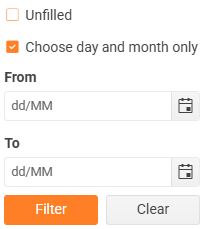
You can also filter out only records that do not contain any value - in that case, select the " Not filled " option.
5. Filter for columns containing integer data type
This filter is used on columns containing integers , such as age.
Click the filter icon and select the condition you want to apply:
- equals
- smaller than
- greater than
- from - to

You can also filter out only records that do not contain any value - in that case, select the " Not filled " option.
6. Filter for columns containing boolean data type
This filter is used on columns containing a Yes/No value. Usually it is a radio button or checkbox.
A typical example is the "Show in ORG" switch or the "Access to HR system" switch.
Click the filter icon and select Yes/No.

